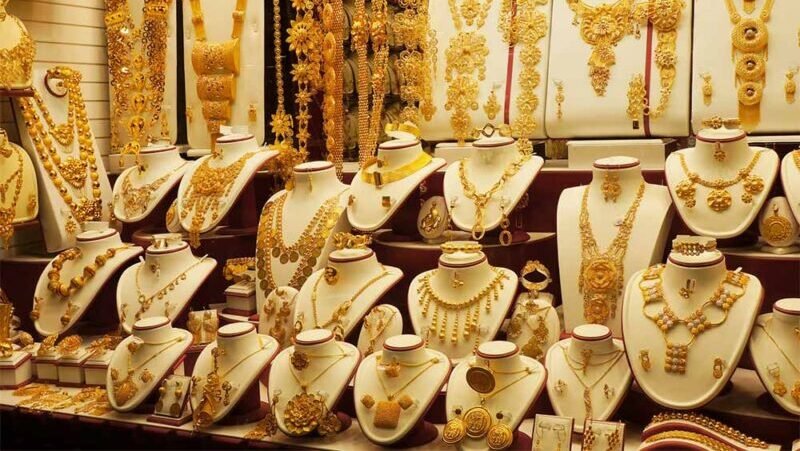Gold and jewelry have long held a special place in Emirati culture, symbolizing wealth, heritage, and tradition. From elaborate wedding adornments to precious heirlooms passed down through generations, gold remains an integral part of life in the United Arab Emirates (UAE). The gleaming metal is not only a status symbol but also a reflection of the country’s deep-rooted cultural values.
In this article, we explore the importance of gold and jewelry in Emirati culture, examining their historical significance, role in traditions, and continued relevance today.
A Historical Connection with Gold
The fascination with gold in the UAE can be traced back to ancient times. The region’s position as a trading hub connected it to the Arabian Peninsula, India, and Africa, bringing in precious metals and gemstones. Gold was often used as currency, with merchants and traders exchanging it for spices, textiles, and other goods.

Historically, gold was also considered a reliable investment, offering financial security in uncertain times. Emirati families often accumulated gold as a form of wealth preservation, passing it down as a family legacy.
Gold in Emirati Traditions and Celebrations

1. Weddings and Engagements
Gold plays a significant role in Emirati weddings and engagements. The tradition of gifting gold jewelry to brides is a symbol of prosperity and good fortune. Elaborate gold sets, including necklaces, earrings, bangles, and rings, are often presented as part of the dowry, known as “Mahr.”
During engagement ceremonies, families exchange gold jewelry as a gesture of celebration and commitment. The designs of these pieces are often intricate, reflecting the rich artistic heritage of the region.
2. Festivals and Special Occasions
Gold jewelry is also worn during religious and cultural festivals, such as Eid and National Day celebrations. It is customary for Emirati women to wear their finest gold adornments on these occasions, symbolizing joy and unity.
3. Births and Family Celebrations
Gold jewelry is often gifted to newborns and young children during celebrations like the birth of a child or circumcision ceremonies. These pieces serve as cherished keepsakes, marking significant milestones in a child’s life.
The Art of Jewelry Craftsmanship

Emirati gold jewelry is known for its intricate designs and skilled craftsmanship. Traditional designs often feature motifs inspired by nature, such as palm trees, flowers, and desert landscapes. Artisans use age-old techniques, including filigree and embossing, to create pieces that are both elegant and symbolic.
While traditional designs remain popular, modern interpretations of Emirati jewelry are gaining prominence. Many jewelers blend contemporary styles with traditional elements, appealing to younger generations who seek personalized and meaningful pieces.
Gold as a Symbol of Wealth and Status
In Emirati culture, gold has long been a marker of social status. Wealthy families often display their prosperity through elaborate gold jewelry, particularly at weddings and public gatherings. Large, statement necklaces, stacked bangles, and intricate headpieces are common sights at grand celebrations.
Moreover, gold continues to be viewed as a stable investment. Many Emiratis purchase gold as a means of preserving wealth, with Dubai’s Gold Souk remaining one of the most famous markets for gold trading.
Cultural Preservation and Passing Down of Heirlooms
Gold jewelry often carries sentimental value within Emirati families. Heirloom pieces are passed down through generations, symbolizing the family’s heritage and traditions. These pieces are treasured not only for their monetary worth but also for the stories and memories they carry.
Mothers often pass down gold jewelry to their daughters, especially during marriage ceremonies. The act of gifting these precious pieces reinforces familial bonds and keeps cultural traditions alive.
Modern Trends and Evolving Preferences
While traditional gold jewelry remains popular, younger Emiratis are increasingly drawn to contemporary designs. Custom-made pieces that incorporate modern elements are gaining popularity, reflecting a blend of tradition and individuality.
Additionally, Emirati designers are making their mark on the global jewelry scene, combining traditional motifs with modern aesthetics. These designers celebrate their heritage while catering to a diverse, international clientele.
Conclusion
Gold and jewelry are deeply woven into the fabric of Emirati culture. From symbolizing prosperity and status to serving as cherished heirlooms, these precious adornments hold immense cultural and emotional value. Whether worn at grand celebrations or treasured as family keepsakes, gold remains a timeless reflection of the UAE’s rich heritage.
As Emiratis continue to honor their traditions while embracing modern influences, the significance of gold and jewelry remains unwavering. It is a legacy that shines brightly, connecting the past, present, and future generations.
Also read: Understanding Hospitality Traditions in Emirati Households













